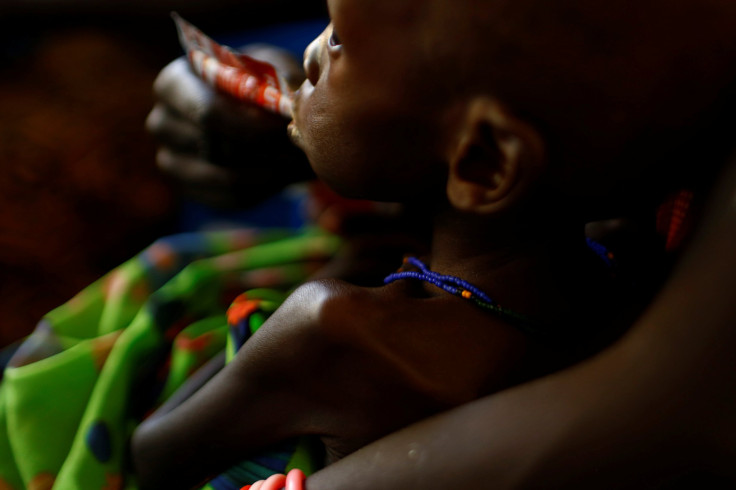World Hunger 2017: South Sudan Declares Famine, How To Help The Millions In Need Of Food Through Donations And Volunteering

Famine was declared in two areas of South Sudan on Monday, with the United Nations and the country’s government warning that 100,000 people were facing starvation with an additional one million people on the brink of famine. A civil war that has raged in the world’s newest country for more than three years, together with an economic crisis, was blamed for what has been described as a “man-made” famine.
“Famine has become a tragic reality in parts of South Sudan and our worst fears have been realized,” said Serge Tissot, the Food and Agriculture Organization (FAO) Representative in South Sudan, in a news release issued jointly with the United Nations Children's Fund (UNICEF) and the World Food Programme (WFP). “Many families have exhausted every means they have to survive.”
In total, 4.9 million people -- 42 percent of South Sudan’s population -- were described as severely food insecure, according to a release by the Integrated Food Security Phase Classification. That number was projected to grow to 5.5 million by July.
A famine was only declared by the U.N. when extreme criteria are met. Those included: when at least 20 percent of households face extreme food shortages in an area with a limited ability to cope; acute malnutrition rates in excess of 30 percent; and the death rate per day exceeds two persons per 100,000.
The declaration for areas of the Unity State in the northern-central part of the country was the first famine to be declared anywhere in the world in six years. That last official famine occurred in Somalia in 2011. However, humanitarian agencies feared that the famine in South Sudan may just be the tip of a new iceberg.
“Right now, in Ethiopia, Kenya and Somalia, there are 12 million people affected [by food insecurity],” Gareth Owen, humanitarian director for Save the Children told The Guardian last week. “These three countries together look as bad as Somalia in 2011. If you add South Sudan on top of that, with that conflict, and Nigeria, you have millions more. And Yemen has 18 million people. That’s creating this real concern that we are facing a major crisis that we have not seen before.”
Agencies have warned that, along with peace and security in the affected countries, more formal assistance was needed to support an aid network straining to cope. Humanitarian funding reached a record high last year. However, agencies still had only just over half of their funding needs met, according to the U.N.’s humanitarian chief Stephen O’Brien.
There were a number of agencies people can donate to ior volunteer with n order to help those in need in South Sudan, including:
U.N. World Food Programme
Save the Children
Action Against Hunger
Oxfam
International Rescue Committee
CARE
© Copyright IBTimes 2024. All rights reserved.











